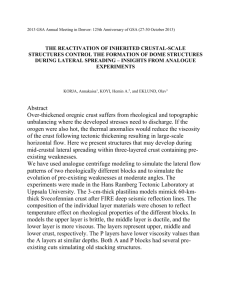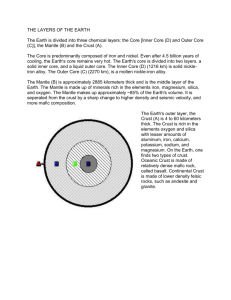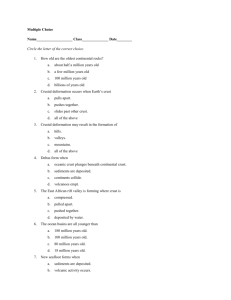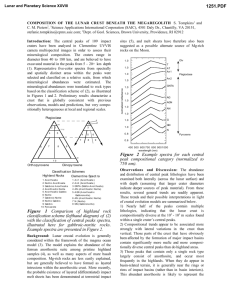Upper crust permeable
advertisement
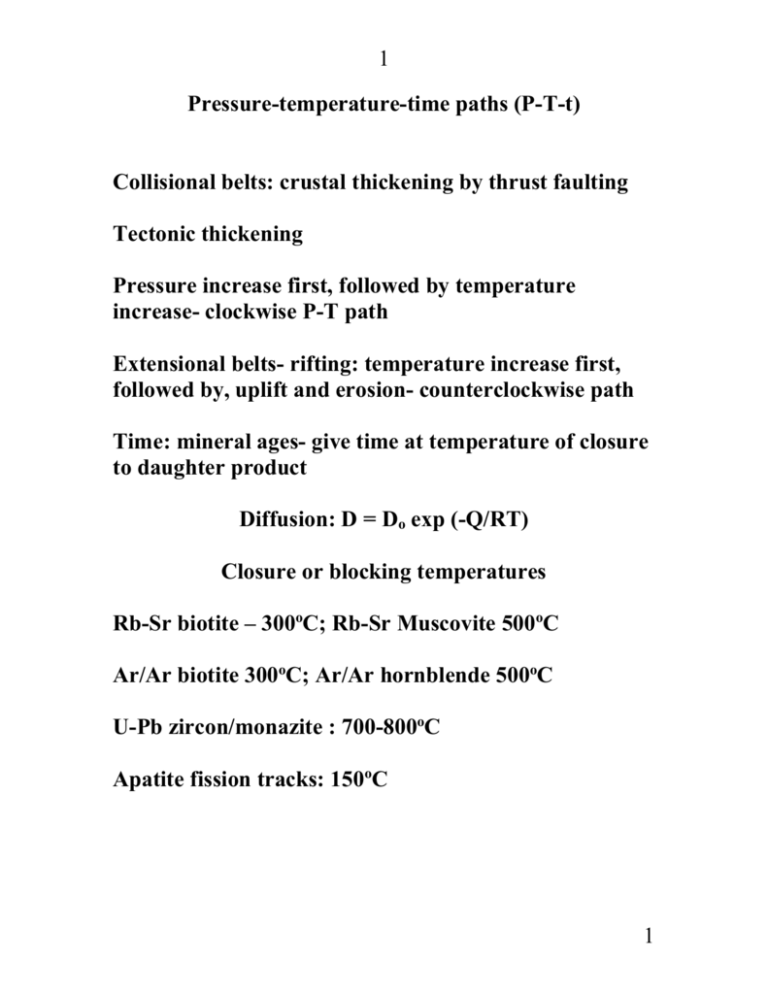
1 Pressure-temperature-time paths (P-T-t) Collisional belts: crustal thickening by thrust faulting Tectonic thickening Pressure increase first, followed by temperature increase- clockwise P-T path Extensional belts- rifting: temperature increase first, followed by, uplift and erosion- counterclockwise path Time: mineral ages- give time at temperature of closure to daughter product Diffusion: D = Do exp (-Q/RT) Closure or blocking temperatures Rb-Sr biotite – 300oC; Rb-Sr Muscovite 500oC Ar/Ar biotite 300oC; Ar/Ar hornblende 500oC U-Pb zircon/monazite : 700-800oC Apatite fission tracks: 150oC 1 2 Rheology of crust Brittle (strong) upper crust- earthquakes nucleate Ductile (weak) lower crust (quartz-feldspar) Strong upper mantle (olivine) at Moho- gets weaker at depth Fluids (water; CO2) Upper crust permeable- fracture pathways; Quartz/calcite veins common Hydrothermal ore (Pb-Zinc) deposits High permeability (>10-17 m2) Fluid pressure is hydrostaticMiddle to lower crust- low permeability (10-20 - 10-18 m2) Fluid pressure (if present) is lithostatic Makes rock more brittle/weakerMohr failure envelope- veins Prograde metamorphism : Dehydration reactions: Liberation of water with increasing temp. Muscovite = Al2 O3 +feldspar + H2O 2 3 Greenschist facies (wet)– amphibolite facies- granulite facies (dry). Electrical conductivity- sometimes high in middle crust: 1) high salinity pore water 2) Metamorphic dehydration water 3) Graphite- highly conductive 4) Partial melting - magma Lower crust dry: granulite facies (CO2-rich fluid inclusions) Composition of crust Seismic velocities Upper mantle/lower crust: 8 km/sec: Mixtures of olivine, pyroxenes +- garnet Dunite, eclogite, harzburgite, garnet lherzolite Mean composition: ultramafic Lower crust: mafic metamorphic rocks 6.0 – 7.5 km/s Meta-diorite, mafic granulite, amphibolite; meta-basalt Mean composition: diorite-basalt 3 4 Upper crust: 5- 6 km/sec. Sedimentary rocks, schists, granite gneiss. Less mafic. Mean composition = granodiorite Lower crustal seismic reflections 1) deep fluids in porous layers??? 2) Metamorphic ductile layering- Shear zones 3) Lithological layering Shear zones commonly traced up to surface exposures Fine grained sediments Shales have very uniform REE compositionsEnriched in incompatible elements Average of upper continentasl crust 4 5 Crustal xenoliths Lower crust overall mafic composition Consistent with poisson’s ratio and seismic velocities 5



